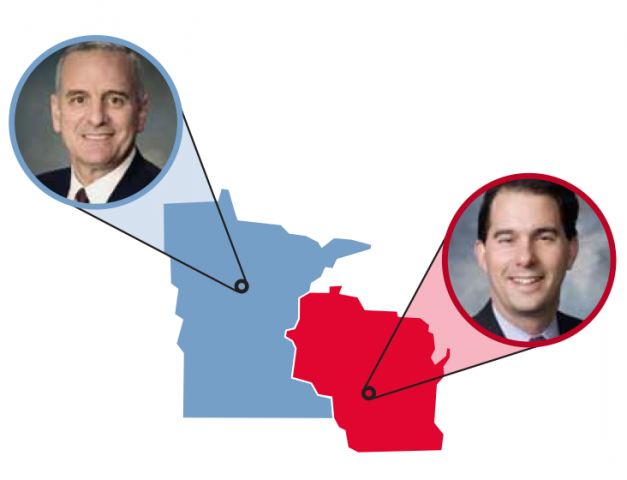

Share
Governor Scott Walker in Wisconsin and Governor Mark Dayton in Minnesota, along with lawmakers, have enacted vastly different policy agendas with an outsized impact on working families.
buy fluoxetine online fluoxetine online generic
Today, independent, nonprofit think tank Economic Policy Institute (EPI) released a study arguing that by virtually every metric, Minnesota’s economy has performed far better for working families than Wisconsin’s since governors Mark Dayton and Scott Walker were elected in 2010.
Key findings include:
online pharmacy buy nolvadex with best prices today in the USA
- Job growth since December 2010 has been markedly stronger in Minnesota—an 11.0 percent growth in total nonfarm employment, compared with only 7.9 percent growth in Wisconsin. Minnesota’s job growth was better than Wisconsin’s in the overall private sector (12.5 percent vs. 9.7 percent) and in higher-wage industries, such as construction (38.6 percent vs. 26.0 percent) and education and health care (17.3 percent vs. 11.0 percent).
- From 2010 to 2017, wages grew faster in Minnesota than in Wisconsin at every decile in the wage distribution. Low-wage workers experienced much stronger growth in Minnesota than Wisconsin, with inflation-adjusted wages at the 10th and 20th percentile rising by 8.6 percent and 9.7 percent, respectively, in Minnesota vs. 6.3 percent and 6.4 percent in Wisconsin.
- Median household income in Minnesota grew by 7.2 percent from 2010 to 2016. In Wisconsin, it grew by 5.1 percent over the same period. Median family income exhibited a similar pattern, growing 8.5 percent in Minnesota compared with 6.4 percent in Wisconsin.
- The inflation-adjusted median wage for women rose by 5.4 percent in Minnesota from 2010 to 2017, compared to only 0.8 percent in Wisconsin. Men’s median wage rose by 1.6 percent in Minnesota, while the median wage for men in Wisconsin actually fell by 0.9 percent.
- A major boost to Minnesota’s economy was accepting a $1.2 billion grant from the federal government to set up a health care exchange and expand Medicaid under the Affordable Care Act (ACA). Wisconsin chose not to accept federal funding to set up a health exchange or to expand Medicaid under the ACA. As a result, Minnesota residents were more likely to have health insurance than their counterparts in Wisconsin, with stronger insurance take-up of both government and private health insurance since 2010.
- From 2010 to 2017, the share of Wisconsin workers in unions fells by 5.9 percentage points from 14.2 percent to 8.3 percent—the largest decline in union membership of any state in that period. This is likely due to the 2011 passage of Act 10, which stripped collective bargaining rights from public sector workers, and the subsequent passage of a so-called “right-to-work” law.
online pharmacy norvasc buy with best prices today in the USA
You can read the full study here.
The report points out that conditions for workers and families in Minnesota leave room for improvement regarding, racial inequities and segregation, high poverty rates, high jobless rates, and racial segregation.

